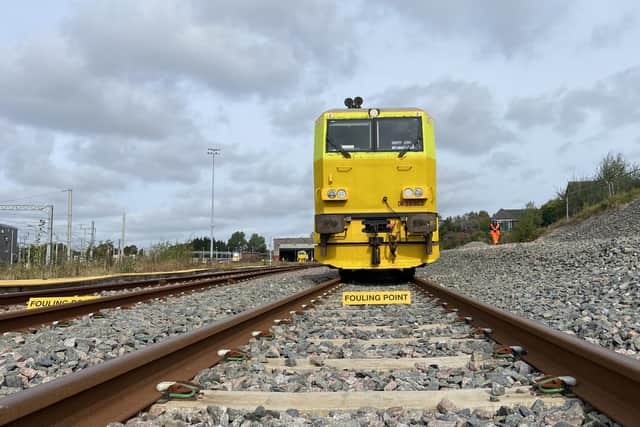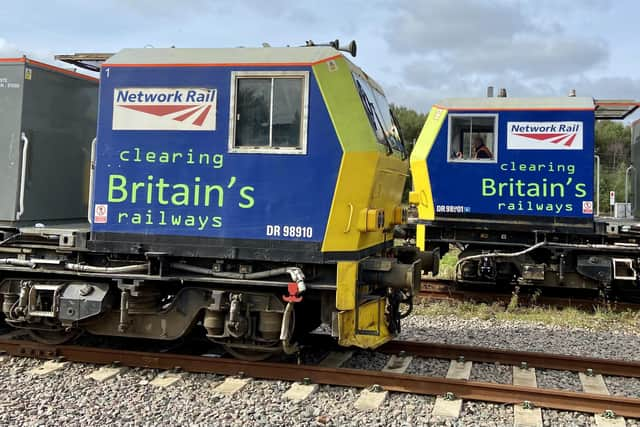How Network Rail is trying to tackle those pesky leaves on the line in pre-emptive autumn strike across North West
and live on Freeview channel 276
Now Network Rail has take pre-emptive action across the North West network, sending out a fleet of ‘leaf-busting’ trains which are now blasting leaves off the line to help keep passengers and freight moving across the North West this autumn.
From this week until December 12, six specialist trains will wash leaf debris from up to 96,000 miles of track across the region while trees are shedding their leaves.
Advertisement
Hide AdAdvertisement
Hide AdNetwork Rail’s seasonal delivery depot at Wigan Springs Branch is the North West’s nerve centre for keeping tracks clear between Crewe and Carlisle this autumn.


Five trains known as MPVs (multi-purpose vehicles) will work from Wigan, while another train known as an RHHT (rail head treatment train) will operate from Carlisle Kingmoor depot in Cumbria.
The total miles of track treated over this time will be equivalent to going nearly four (3.855) times around the equator.
After railway lines have been cleared with high pressure water jets the machines then apply rails with a sand-like gel to help passenger and freight train wheels grip the tracks.
Advertisement
Hide AdAdvertisement
Hide AdRegarded as the railway’s equivalent of black ice on the roads, leaves on the line can create issues when they stick to damp rails and are compressed by moving trains into a thin, black layer which can affect train braking and acceleration.


The build-up of leaf mulch can also make it harder for signallers to detect a train’s location, causing delays.
Last year Network Rail spent £5 million on the North West route during its autumn efforts to keep passengers moving.
This year, 77 traction gel applicators have been positioned across the routes rail network. They spray a special sand-like gel onto the rails to help provide extra grip for train wheels.
Advertisement
Hide AdAdvertisement
Hide AdSpecialist teams will be positioned across the North West to check that our autumn treatment programme is working effectively and provide additional support where necessary.
Dave Shawcross, Network Rail seasons delivery manager, said: “Leaves on the line are a big problem for the railway. It disrupts services and inconveniences people’s journeys.”
Rob Cummings, seasonal improvement manager at Northern, said: “We are working hard as an industry to clear leaves from the line and to keep disruption to a minimum during the autumn period.
“We have introduced special timetables on problematic routes to give our customers a more reliable service and our drivers also have advanced training to help develop techniques which further reduce the impact of slippery rails. We are also helping to develop new innovative technology that will reduce the impact of leaves on the line.”
Advertisement
Hide AdAdvertisement
Hide AdJerry Farquharson, service planning director at TransPennine Express, said: “Autumn conditions including wet weather combined with leaves on the line can create challenging conditions which can result in disruption and delays for our customers.
“Our modern trains are all fitted with devices that spray sand on to the tracks to provide extra grip but despite this, sometimes our drivers need to adapt the way they drive and slow down. We continue to work closely with our industry partners including Network Rail to keep customers moving and recommend that anyone travelling checks their journey prior to travelling."